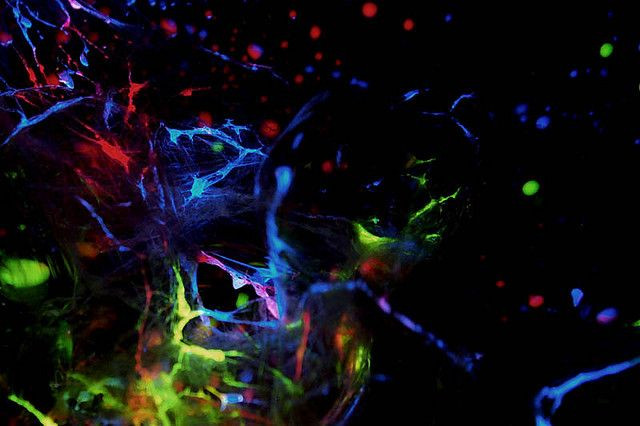How The Brain Works: Blue Brain Project Creates Digital Slice Of Brain To Study Neurons

The brain is a very delicate organ. Taking it apart to learn more about its secrets takes practice, patience, and the kind of steady hand only the world’s calmest people have. Instead of taking apart brain after brain in the name of science, however, researchers at the Blue Brain Project — which resides at the Ecole Polytechnique Federale de Lausanne (EPFL) in France — have spent the past decade trying to digitally reconstruct the brain section of a juvenile rat.
The first draft of the project, published in Cell, shows off how far the process has come; the reconstruction includes over 31,000 neurons, 55 layers of cells, and 207 different neuron subtypes. The purpose of the project is to define all the different types of neurons found in the brain, measure their electricity-firing properties, and create a roadmap of the circuits that connect the neurons to one another. Gaining insight to the way neurons work would allow scientists to better understand how the brain’s structure makes it work the way it does.
Markam and his colleagues decided to digitally reconstruct a piece of the brain from a region called the neocortex, which resides in the cerebral cortex and is responsible for sight and hearing in mammals. Markam found the neocortex was the area of the brain that allowed for the most extensive characterization. Using the data they found, the researchers built the slice of brain to include the different neurons found in that area of the brain, the factors that make them fire, and the connections they make. In all, it comprised of 40 million synapses and 2,000 connections between each brain cell type.
"The reconstruction required an enormous number of experiments," said lead author Henry Markram, of the EPFL, in a press release. "It paves the way for predicting the location, numbers, and even the amount of ion currents flowing through all 40 million synapses."
After completing the reconstruction of their digital brain, the researchers used supercomputers to put the neurons through a simulation of different behaviors. By adjusting the level of calcium ions, which pass information between neurons, the researchers could create a wider pattern of circuit-level activity. An example of this would be that when you sleep, your brain emits slow waves of neural activity. When the researchers activated these waves during their simulations, they found the neural circuits were able to switch how they operated with regard to certain important behaviors. These findings wouldn’t have been reached by looking at the features of individual neurons.
"An analogy would be a computer processor that can reconfigure to focus on certain tasks," Markram said. "The experiments suggest the existence of a spectrum of states, so this raises new types of questions, such as 'what if you're stuck in the wrong state?'"
The Blue Brain Project is currently exploring the brain and working on improving its digital model. All of the results of the project are free to view here.
Source: Markram H, et al. Reconstruction and Simulation of Neocortical Microcircuitry. Cell. 2015.



























